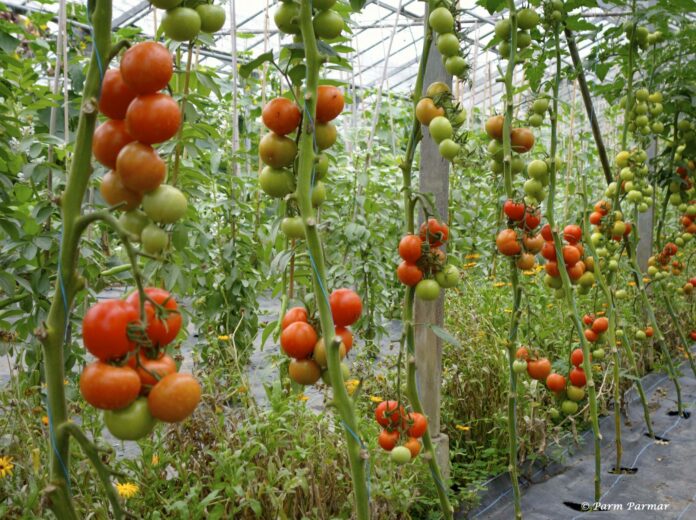You success in tomato farming will largely depend on how well you avoid the biggest mistakes that are associated with poor tomato farming. In this feature, we look at the 8 mistakes you must avoid if you want to make money from this farming venture.
1. Not Hardening Seedlings
Hardening your seedlings is one of the most important things you can do to help ensure their survival. Without hardening, your seedlings won’t be able to adapt to the change in temperature or the exposure to weather, like wind and rain. Some ways to ensure your seedlings are outdoor-ready include:
- Gradually increase your seedlings’ exposure to the elements about a month after seeds have germinated.
- For the first day of exposure, keep your plants out of direct sunlight or rain, and don’t take them out in the cold. Bring them back in after a few hours.
- Seedlings will need to be exposed to the elements increasingly over a period of about 7-10 days to be fully hardened and ready for the outdoors.
2. Planting Too Closely
Planting your tomatoes too closely not only stunts their growth and causes a drop in fruit production, but it also makes it too difficult for sun to reach through the plants. This means your tomato plant suddenly becomes the perfect breeding ground for plant diseases that love the damp conditions. Here’s how to ensure your tomato plants have adequate spacing:
- Tomatoes grown upright in cages need at least 1 ½ feet between them, though 2 feet is ideal. Sprawling tomatoes will require twice the amount of space. While it’s not a big deal to leave your plants slightly unsupported, you never want the plant to be touching the ground.
Why you’re not making money from chicken farming and what to do
3. Planting the Wrong Tomatoes
Now that we’ve covered spacing requirements, the next step is choosing the right type of tomatoes for the amount of room you have. There are two main categories of tomato plants:
- Determinate tomatoes only grow to be a certain size. They can be grown with or without support and don’t require pruning. These plants generally put out all their fruit, then they stop growing and die.
- Indeterminate tomatoes will grow pretty much as big as you allow them to get. Therefore, they need more room and require support from a stake or cage. These plants will put out fruit all season, sometimes until the first frost.
Picking the correct type for your planting area will help you ensure your plants stay healthy and fruit-bearing all season.
4. Planting in the Shade
Like other plants that produce fruit, tomatoes need at least 7 hours of sun per day. Placing them in a shady area deprives the plant of the amount of sun it needs, and it will impact how your plant grows.
Fruit production requires a tremendous amount of energy. Like all plants, tomatoes get this energy from the sun.
Plants that don’t get enough sun will put out plenty of foliage, but little fruit. As pretty as those leaves may be, you can’t put them on the dinner table.
5. Not Pruning
If you have more space and opted for indeterminate tomatoes, part of your plant maintenance will be pruning. Reasons for pruning include:
- Since overcrowding makes it easier for plant diseases to spread, neglecting to prune indeterminate plants can be detrimental.
- The foliage on crowded plants will dry more slowly which encourages a variety of plant problems.
- Plants need to be pruned so nutrients are being directed to fruit growth rather than to new leaf growth. Not only will plants produce smaller tomatoes at a slower rate if they aren’t pruned, but the overgrowth can also provide the perfect environment for plant diseases.
If your plants are looking diseased, sterilize your shears after use to avoid spreading the disease to healthy plants.
6. Not Ready For Early Blight
Early blight can leave your plants completely bare of foliage, and if you’re not prepared to treat it, this problem can quickly spiral out of control. Early blight is caused by a fungus that can overwinter in soil, so if you’ve had plants with this problem before, you should avoid planting in that area.
Early blight will first appear on the oldest lower leaves. You’ll see brown spots that look like targets, and the leaves will yellow around it. Eventually the whole leaf will turn brown, die and fall off.
To help prevent early blight from devastating your plants, try rotating crops — moving them to a different area of the garden with fresh soil. However, if your plant is already infected with early blight, you can treat it using an organic fungicide.
7. Over fertilizing
Feeding your plants is important, but feeding them too much can be just as detrimental as not feeding them at all. If used too frequently, fertilizer can build up in the soil and cause problems.
Fertilizer provides plants with nitrogen, which is great. However, excessive nitrogen can cause your plants to put more energy into growing leaves than growing the tomatoes.
To combat this issue of over fertilization, look for fertilizers specifically designed for tomatoes, or opt for a shovel full of natural compost.
8. Not Watering Properly
Inconsistent watering can lead to multiple problems for your plants, including blossom end rot. To water your plants correctly, consider:
- Providing your plants with a consistent watering schedule. Ensure they are able to dry out a little bit so they are not drowning, but be sure they don’t dry out all the way.
- Watering early before the sun is in full force. Damp leaves can get leaf burn or other issues from lingering water.
While these tips won’t solve every problem you could encounter in your garden, they’re definitely a great place to start when working toward healthy plants. A good garden takes a mix of time, effort and preventative measures — it’s not as simple as planting a seed and watching it grow.









Like this work. Looking for polythene soil cover advice